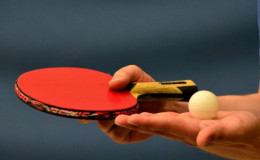
The Basic Rules and Regulations of the Game
- The game is played between two sides, of which one plays the blue and black and the other the red and yellow balls (or green and brown versus pink and white).
- A game may be either singles, in which each player plays both balls of the side, or doubles, in which each player of the side plays one ball and may strike only that ball.
- The game is played by striking a ball with a mallet. The player whose turn it is to play is known as the striker, the ball that he strikes during the turn as the striker’s ball and the other ball of his side as the partner ball.
- The striker must never strike the partner ball or a ball of the other side. By striking the striker’s ball, the striker may cause it and other balls to move and score hoop or peg points although only if the striker’s ball is a rover may it cause another rover to score a peg point.
- The striker must position the balls and play his strokes with reasonable dispatch
- The purpose is for each side to make both its balls score 12 hoop points and a peg point, a total of 26 points, before the other side.
- A ball scores a hoop point by passing through the correct hoop in the order 1, 2, 3, 4, 5, 6, then 1-back, 2-back, 3-back, 4-back, penultimate and rover in the direction known as running a hoop in order.
- A ball that has scored all 12 hoop points is known as a rover.
- Croquet consists of a few basic strokes, but like the moves in chess, once you have mastered them a complex tactical game result.
Types of Play
- Advanced singles play
- Handicap singles play
- Doubles play
- Shortened games
- Double-Banked Games
EQUIPMENTS
THE COURT
- The standard court is a rectangle measuring 28 by 35 yards.
- Croquet however can be enjoyed on any size lawn, just scale the dimensions.
- The sides of the lawn are in the ratio of 5: 4 with the unit of length being seven yards.
Yard Line
- The perimeter of an inner rectangle whose sides are parallel to and one yard from the boundary is called the yard-line.
Baulk Line - The parts of the yard-line that extend from the corner spots at corners 1 and 3 to a line extended through the centre of hoops 5 and 6 are known as the A and B baulk-lines respectively.
Standard Setting
- The peg is set in the centre of the court.
- There are six hoops which are set parallel to the north and south boundaries; the centre of the two inner hoops is 7 yards to the north and south of the peg; the centre of the four outer hoops is 7 yards from the adjacent boundaries.
PEG
- The peg is a rigid cylinder with a height and uniform diameter above the ground of 18 inches and 1 1/2 inches respectively.
- It must be vertical, firmly fixed, and painted white to a height of at least 6 inches above the ground.
HOOPS
- Each hoop is made of solid metal and consists of two uprights connected by a crown.
- A hoop must be 12 inches in height above the ground measured to the top of the crown and must be vertical and firmly fixed.
- The uprights and the crown must have a uniform diameter of 5/8 inch above the ground although minor deviations at the top and bottom are permitted.
- The inner surfaces of the uprights must be approximately parallel and not less than 3 ¾ inches or more than 4 inches apart.
- Each hoop on a court must have the same dimensions within a tolerance of 1/32 inch.
BALLS
- There are four balls, coloured blue, black, red and yellow respectively.
- Alternative colors, namely green, brown, pink and white, and other sets of colors or distinguishing marks are permitted.
- A ball must be 3 5/8 inches in diameter and must weigh 16 ounces.
MALLETS
• A mallet consists of a head with a shaft firmly connected to its mid-point at right angles to it so that they function as one unit during play.
Governing Bodies
• World Croquet Federation
Major Tournaments
- Wimbledon Cup
- World croquet championship
- President’s Cup
- Open croquet Championship
Sister Games
• Golf croquet
• American six-wicket croquet










